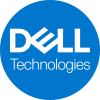We use the solution for hyper-converged infrastructures with VMware and physical/virtual SQL solutions.
Both Dell and Cisco would be data center modernization. We're modernizing from a three-tier to a single infrastructure.
The enterprise manager feature sets are great. It's great for managing…





